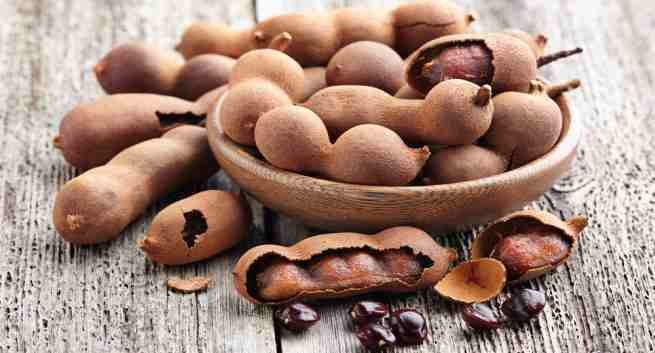Nutrition
Health benefits of jute leaves (Ademe)

• Jute leaves
Jute leaves is popularly called ewedu among the Yoruba and rama or ayoyo among the Hausa. It is a popular vegetable in West Africa and is not just rich in nutrition but also has a lot of health benefits, including protecting us from various diseases. Nutrition-wise, vegetables are low in calories but high in vitamins and minerals.
– Internal Bleeding
Jute plant consists of considerable amount of Vitamin K which is helpful in reducing the threat of bleeding in the liver, poor nutrient absorption, jaundice or the combination of long term use of antibiotics or aspirin. Some of the problems related with the gastrointestinal system due to a decrease of this vitamin include colitis, obstructions, sprue and Crohn’s disease. All these problems are due to a reduced content of Vitamin K.
-Weight loss
The green leaf has been described as a source of weight loss. Serving ayoyo or ademe without meat or fish has 97 calories. So, for those trying to lose some weight, include ewedu in your diet.
The ewedu leaf is an adequate source of fibre, thus making the plant very helpful in dealing with weight management and may also promote intestinal health by helping with bowel movement.
– Good for pregnant
women
This jute leaf has been known to be a remedy for pregnant women experiencing prolonged labour. When a pregnant woman is experiencing prolonged labour, a bunch of ewedu leaves squeezed with the stem can be given to her to drink. It has also been discovered to aid milk secretion in lactating mothers.
– Protects Eye Health
Poor diet or nutrient deficiencies are the fundamental reasons of numerous eye diseases. Research has proven that taking vitamin B6 together with other vitamins, like folate, can help in the prevention of eye disorders and loss of vision. Jute plant consists of 0.496 mg Vitamin B6 which is 38.15percent of the daily recommended value. Regular consumption of Jute plant is believed to help slow the start of certain eye diseases, including age-related macular degeneration.
-Fights off colds and flu
Jute plant consists of Vitamin C which is extremely beneficial to the immune system and plays an important role in the body’s ability to fight off colds and viruses. You can take 1,000 mg of Vitamin C to fight off an oncoming cold and 4,000 mg per day to get rid of a cold which is previously in your system.
Vitamin C when taken during colds and flu can help to decrease the risk of developing further complications, like pneumonia and lung infections.
-Reduces cholesterol
Several research studies have shown that copper helps to reduce the levels of “bad” cholesterol (LDL cholesterol) and to increase beneficial cholesterol (HDL cholesterol). Jute plant consists of 0.222 mg of copper which is 24.67percent of the daily recommended value. This helps to lower the chances of cardiovascular diseases like atherosclerosis, heart attacks, and strokes.
– Protects healthy hair and skin
Vitamin B2 also known as riboflavin plays an important role in maintaining collagen levels, which helps to make up healthy skin and hair. Collagen is required to maintain the youthful structure of skin and to prevent fine lines and wrinkles, thus a riboflavin deficiency can make us look aged earlier. Some research recommends that riboflavin can decrease the time needed for wound healing, can decrease skin inflammation and cracked lips, and can help naturally slow signs of aging.
Source: Herbal Cure For Disease
Nutrition
Benefits of Tamarind Juice

Tamarind juice is particularly abundant in vitamin C, which is important for a strong immune system, healthy skin and wound healing.
Additionally, tamarind provides significant amounts of B vitamins like thiamin, riboflavin and niacin, as well as essential minerals like potassium, magnesium, and iron.
– Antioxidant properties
Tamarind contains potent antioxidants, such as polyphenols and flavonoids, which combat harmful free radicals in the body. This oxidative stress reduction can help prevent cell damage and lower the risk of chronic diseases, including cancer.
-Digestive health
Tamarind contains dietary fibre and natural laxatives that promote regular bowel movements, alleviate constipation and improve overall gastrointestinal health.”
– Heart health
Regular consumption of tamarind juice may have a positive impact on cardiovascular health. It can help lower cholesterol levels due to its high fibre content and antioxidants, reducing the risk of heart disease.
– Anti-inflammatory properties
Tamarind juice does a great job in curbing inflammation in the body. High in anti-inflammatory compounds such as polyphenols and bioflavonoids, this property makes it potentially beneficial for individuals suffering from conditions like arthritis or chronic inflammatory diseases.
– High magnesium content
Tamarind is rich in magnesium- 110 mg per 120 g of pulp. This simply concludes that drinking tamarind is a convenient way to meet your daily magnesium requirements. It plays an important role in the formation of bones, regulates heart rhythm, and contraction of muscles, and keeps blood sugar levels under check.
Source; Healthshots.com
Nutrition
Tamarind drink (Saamia)

Ingredients
• 100 grams of tamarind seed (peeled including seeds)
• Water
• 50 grams of ginger
• 2 grams of alligator pepper
• 3 grams of cloves
• Sugar to taste
Preparation
• Peel and wash ginger, cloves, alligator pepper and blend.
• Soak tamarind overnight (optional)
• Boil water and pour over tamarind
• Soak for several hours
• Mash the mixture for the pulp to come off the seeds
• Add grounded or blended spices to the mixture
• Add water and boil for 30 minutes
• Put off fire and allow to cool
• Sieve and strain to get rid of particles (spices and pulp)
www.thespectatoronline.com
Your Weekend Companion







